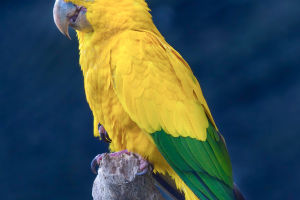Giraffes, the tallest land animals on Earth, present a unique spectacle with their towering necks, which can reach up to 2 meters (approximately 6.5 feet) in length.
This remarkable anatomical feature, while beneficial for feeding and spotting predators, poses an intriguing question: Where does a giraffe rest its long neck when it sleeps?
The Physiology of a Giraffe's Neck
Before diving into the sleeping habits of giraffes, it is important to understand the structure of their necks. Despite their extraordinary length, giraffe necks contain only seven vertebrae, the same number as most mammals, including humans. However, each vertebra is greatly elongated, contributing to the neck’s remarkable length. These vertebrae are connected by ball-and-socket joints, allowing for a wide range of motion and flexibility, which is essential for feeding on tall trees and for their unique sleeping positions.
Sleeping Patterns of Giraffes
Giraffes have evolved to sleep less than many other mammals, which is largely a survival adaptation. In the wild, giraffes are vulnerable to predators such as lions, and their size makes it difficult to hide. As a result, they have developed a sleep pattern that minimizes vulnerability. Giraffes sleep for short periods, typically around 4.6 hours a day, often broken into several short naps lasting only a few minutes each.
Neck Position During Sleep
The most fascinating aspect of giraffe sleep is how they manage their lengthy necks. Giraffes adopt different sleeping positions depending on whether they are napping or in a deeper sleep.
1. Standing Sleep
Giraffes often sleep standing up, especially when taking short naps. This position allows them to remain alert and ready to flee from potential threats. When standing, a giraffe keeps its neck upright or slightly tilted, ready to respond quickly to any sign of danger.
2. Recumbent Sleep
For deeper sleep, giraffes occasionally lie down. This is less common due to the increased vulnerability to predators. When a giraffe lies down, it typically folds its legs under its body in a kneeling position. The real marvel is how it positions its neck. The giraffe curls its neck back and rests its head on its hip or thigh. This position is not only efficient but also surprisingly comfortable for the giraffe, thanks to the flexibility and strength of its neck muscles.
Evolutionary Adaptations
These sleep positions have evolved as a balance between the need for rest and the necessity of staying alert to potential dangers. The standing position, while allowing only light sleep, ensures that the giraffe can quickly become alert and mobile. The recumbent position, although used less frequently, allows for deeper rest and a more secure feeling when the environment is deemed safe.
The Importance of Neck Musculature and Flexibility
The ability of giraffes to manage their necks during sleep is largely due to their strong and flexible neck muscles. These muscles support the heavy head and neck, allowing for various resting positions without causing strain. The ball-and-socket joints between vertebrae add to this flexibility, enabling giraffes to adopt the unusual sleeping posture of curling their necks back.
Insights from Captivity Studies
Observations of giraffes in captivity have provided further insights into their sleeping habits. In the controlled and predator-free environment of zoos, giraffes can be observed engaging in more prolonged periods of recumbent sleep compared to their wild counterparts. This suggests that the fear of predators heavily influences their sleep behavior and positions in the wild.
The question of where a giraffe rests its 2-meter neck when it sleeps highlights the remarkable adaptations of these majestic creatures. Their sleeping habits, characterized by short naps and unique neck positions, are a testament to their evolutionary strategies for survival. Whether standing with an alert posture or lying down with their necks elegantly curled, giraffes manage to rest effectively despite the potential challenges posed by their extraordinary anatomy. This balance of rest and vigilance underscores the incredible adaptability of giraffes to their environment.


